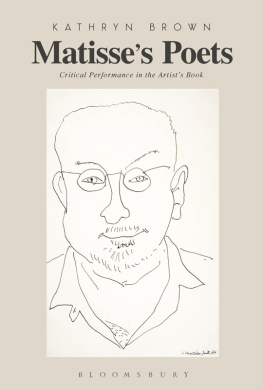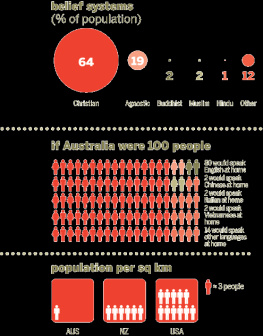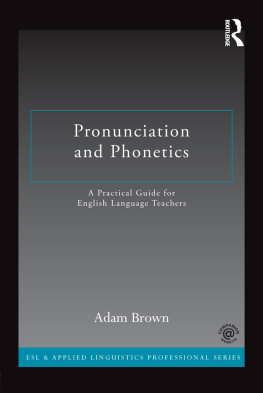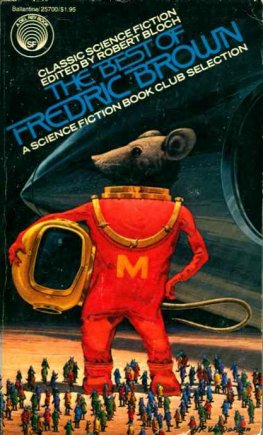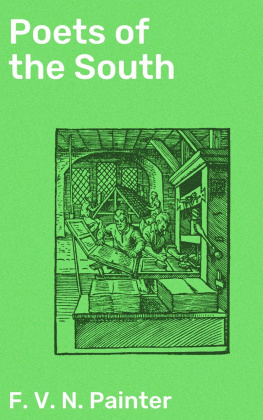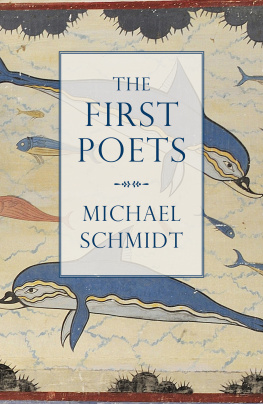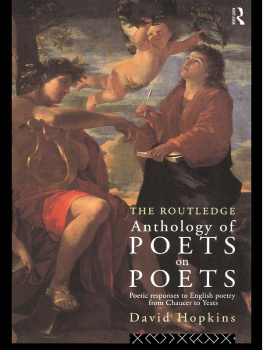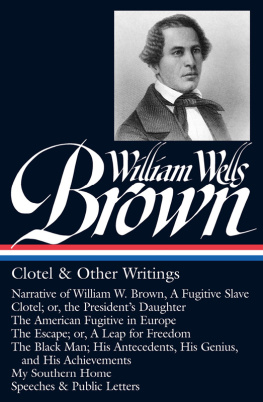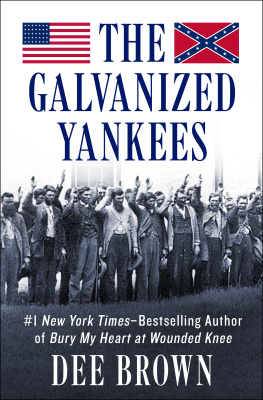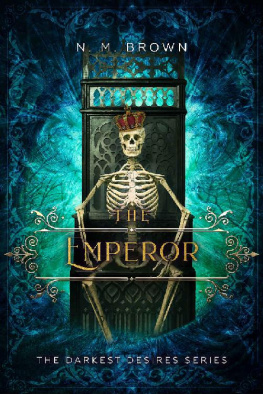Brown - Matisses Poets
Here you can read online Brown - Matisses Poets full text of the book (entire story) in english for free. Download pdf and epub, get meaning, cover and reviews about this ebook. publisher: Bloomsbury USA, genre: Romance novel. Description of the work, (preface) as well as reviews are available. Best literature library LitArk.com created for fans of good reading and offers a wide selection of genres:
Romance novel
Science fiction
Adventure
Detective
Science
History
Home and family
Prose
Art
Politics
Computer
Non-fiction
Religion
Business
Children
Humor
Choose a favorite category and find really read worthwhile books. Enjoy immersion in the world of imagination, feel the emotions of the characters or learn something new for yourself, make an fascinating discovery.
- Book:Matisses Poets
- Author:
- Publisher:Bloomsbury USA
- Genre:
- Rating:4 / 5
- Favourites:Add to favourites
- Your mark:
- 80
- 1
- 2
- 3
- 4
- 5
Matisses Poets: summary, description and annotation
We offer to read an annotation, description, summary or preface (depends on what the author of the book "Matisses Poets" wrote himself). If you haven't found the necessary information about the book — write in the comments, we will try to find it.
Matisses Poets — read online for free the complete book (whole text) full work
Below is the text of the book, divided by pages. System saving the place of the last page read, allows you to conveniently read the book "Matisses Poets" online for free, without having to search again every time where you left off. Put a bookmark, and you can go to the page where you finished reading at any time.
Font size:
Interval:
Bookmark:
Matisses Poets
Matisses Poets
Critical Performance in the Artists Book
Kathryn Brown
Bloomsbury Academic
An imprint of Bloomsbury Publishing Inc

For Alan Thomas
Je suis moifidle au livre
Stphane Mallarm, Notes en vue du Livre
Figures
Plates
In some cases there are minor discrepancies between the dimensions of works in the List of Illustrations and the dimensions for such works as stated in the Catalogue raisonn. The dimensions cited above correspond with information provided by the relevant museums regarding the artefacts in their collections. General information regarding the dimensions of the works as stated in the footnotes follows the Catalogue raisonn.
This book would not have been possible without the support and generosity of numerous museums, libraries and archives around the world. My special thanks are owed to Wanda de Gubriant (Matisse archives, Issy-les-Moulineaux); Muse Matisse (Le Cateau-Cambrsis); Pierre Matisse archives (Morgan Library & Museum, New York); Bibliothque nationale de France; Yvonne Boyer and the W.T. Bandy Center for Baudelaire and Modern French Studies (Vanderbilt University); New York Public Library; La Bibliothque littraire Jacques Doucet (Paris); Bodleian Library, Taylor Institution and Sackler Library (University of Oxford); Baltimore Museum of Art; Philadelphia Museum of Art; Koninklijke Bibliotheek (Den Haag); Minneapolis Institute of Art; Humanities Research Centre of the Australian National University; and Saint Louis University. I am particularly grateful to the National Gallery of Australia for providing me with access to their collections and for supplying me with such a large number of images for this study.
Sections of this book have been presented at conferences organized by the College Art Association; the Society for History of Authorship, Reading, and Publishing; the Society for French Studies (UK); the Sminaire TIGRE led by vanghlia Stead at the cole normale suprieure (Paris); and at workshops held at the University of Kent (Canterbury and Paris) and the University of Edinburgh. I am grateful to the organizers of, and participants in, these events for their thoughtful responses to my work. Earlier versions of arguments found in have appeared in Life Writing (12:1, 2015), Questions of Influence in Modern European Literature, ed. Thomas Baldwin, James Fowler and Ana de Medeiros (Palgrave Macmillan, 2013) and The Art Book Tradition in Twentieth-Century Europe, ed. Kathryn Brown (Ashgate, 2013).
I have benefitted greatly from conversations with numerous friends and colleagues throughout the writing of this book. In particular, discussions with Peter Read and Anna Sigrdur Arnar about French modernism and the history of artists books have greatly impacted on the arguments of the present study. Susan Harrow has provided support and encouragement from inception of this project to its publication. The detailed comments of the manuscript reviewers have improved the text significantly, and I appreciate the time they took to read the initial draft so carefully. It has, as ever, been a pleasure to work with Clara Tomasini and I am grateful for her careful proofreading of the French quotations and for her rigorous discussion of my translations throughout the text. Any remaining errors are, of course, my own.
The guidance of Margaret Michniewicz at Bloomsbury Academic has been vital throughout the publication process. I am also grateful to the School of Arts, English and Drama at Loughborough University for generously supporting the acquisition of images and copyright permissions for this study. Finally, my special thanks are owed to Alan Thomas for the time he has spent travelling to, looking at, and talking about Matisses works. This book is dedicated to him.
Matisse and the book
Growing up in an industrial town in late nineteenth-century provincial France, Henri Matisse had little access to books. Bohain-en-Vermandois did not possess a public library during Matisses childhood, and a bibliothque communale was not opened until 1872.
Despite such inauspicious beginnings, books would come to play a vital role in Matisses development as an artist. The aim of the present study is to show how Matisse used literature as a foil for developing his thoughts about creativity and to illuminate the importance of book production within his overall output. The following chapters are structured around Matisses major works in the genre of the livre dartiste. Taken together, these books reveal different facets of the artists imaginative engagement with the written word, his relationships to contemporary authors, and his conception and communication of the French literary canon. More importantly, these works show how interpreting literature helped Matisse to extend his pictorial language.
In the following chapters, I shall be concerned with the compositional and interpretive choices that Matisse made as a painter, printmaker and reader in the field of book production. I shall consider the literary environment within which Matisse worked and the relationships he enjoyed or suffered with writers of his generation. A key thesis of this study is that Matisses books function as a form of literary criticism and that they direct the reader to perform specific acts of textual interpretation. I shall examine various ways in which this is achieved including, for example, through decisions the artist made regarding the material features of his books (page size, layout, typography and composition), the selection and arrangement of texts, and, of course, the style and content of the images themselves. While scholars have analysed tensions between twentieth-century poetry and painting that developed from fin-de-sicle debates about so-called hierarchies of the arts, I shall show how Matisses books chart an innovative course by serving both creative and critical purposes.
While I shall focus on Matisses use of illustration for creative and critical purposes, it is also the case that writers provided an important conceptual framework within which to locate the artists output. Jack Flam has pointed to various difficulties that scholars have encountered in interpreting Matisses works. He argues that, in contrast to the direct, narrative character of much of Pablo Picassos uvre, for example, Matisses interrogation of metaphysical issues has often led writers to adopt a relatively esoteric language in their own descriptions and interpretations. Flams discussion reflects suspicions that Matisse himself expressed about the extent to which language could adequately communicate ideas that he had conveyed in visual form.
The study of Matisses relationships to poets and his interpretation of literature through visual imagery is a helpful way of approaching this problem. Many of the writers and publishers with whom Matisse collaborated offered important insights into the artists works and the critical context into which they were received. In addition, Matisses correspondence and creative encounters with poets, novelists and playwrights provided audiences with a vocabulary to explore broader themes that run throughout his uvre as a whole. In part, this vocabulary was fashioned by writers who, in addition to collaborating directly with Matisse, discussed his works and style of creativity in their essays and letters. In many cases, these exchanges have had a lasting impact on the critical reception of Matisses works.
I shall argue further that the vocabulary employed by writers with whom Matisse collaborated is broadened by the livres dartiste themselves and by the artists own commentaries on them. It will be seen that Matisse often used book production for the purpose of analysing and solving pictorial problems that he encountered in other media, particularly in painting and drawing. As a corollary to this, writing about Matisse and his
Next pageFont size:
Interval:
Bookmark:
Similar books «Matisses Poets»
Look at similar books to Matisses Poets. We have selected literature similar in name and meaning in the hope of providing readers with more options to find new, interesting, not yet read works.
Discussion, reviews of the book Matisses Poets and just readers' own opinions. Leave your comments, write what you think about the work, its meaning or the main characters. Specify what exactly you liked and what you didn't like, and why you think so.

